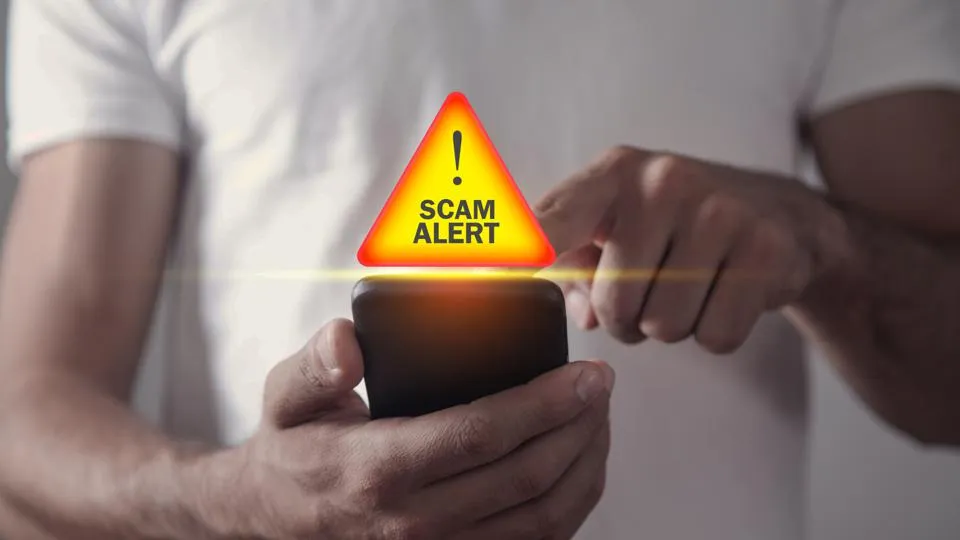Content from Forbes Advisor Brand Group is presented as part of a paid partnership with our advertisers.
Scams are hitting consumers' wallets harder than ever. In 2024 alone, U.S. users reported losing more than $12.5 billion to fraud -- a 25% jump from the previous year, according to the Federal Trade Commission. With many of these scams starting on social media and ending in payment apps, platforms like Cash App are aiming to fight back with tools designed to stop scams before they happen.
One of Cash App's key security features is its scam alert -- a real-time, in-app notification that warns you if Cash App's systems detect something suspicious about your payment. Since launching in 2020, Cash App has reported that the feature has helped block or reverse more than $2 billion in potential scam payments.
Here's how that split-second pop-up may help you avoid a costly mistake.
Every time you tap "Pay," Cash App uses AI and machine learning to analyze hundreds of risk signals instantly.
According to Cash App, the system also pulls in threat data from third-party sources, law enforcement, financial institutions and other tech platforms. If no red flags are detected, the payment goes through as normal. But if the system detects something suspicious, Cash App will show a warning message, giving you a moment to pause and consider whether the transaction might be a scam.
Cash App describes the system as adaptive. This is meant to help the AI and machine learning system improve over time, continually adjusting to new fraud patterns as the data evolves.
If your payment is flagged, you'll see a full-screen warning noting that other Cash App users have reported issues receiving goods, services or refunds when paying accounts like it.
From there, Cash App says you have two options:
- When risk is deemed unusually high, such as a recipient being tied to multiple confirmed scams, Cash App may block the transaction and launch a review/investigation of the recipient's account.
- If a suspicious payment still slips through, you can submit a report to Cash App by uploading screenshots, chat logs and other details directly to investigators through the app or by calling support.
According to Cash App, these reports can:
Under Cash App's current scam reimbursement policy, customers may be eligible for partial or full reimbursement. Reimbursement depends on the scam type, whether a warning appeared and the evidence you submitted -- so remember to treat every payment cautiously.
Since launching in 2020, Cash App's scam alert feature has helped users cancel more than $2 billion in potentially risky payments -- money that might otherwise have disappeared into fraudulent accounts. The fintech reports that confirmed scam transactions account for less than 0.01% of all peer-to-peer payments on the platform, according to internal company data from September to November 2024.
But aiming to reduce individual scam payments is only part of the overall strategy. In 2024, Cash App reports helping dismantle over 11,745 scam‑related social media profiles, websites and domains using internal detection tools and third-party threat trackers. Those combined feeds help surface where fraudsters recruit victims, not just where they request money.
Cash App wants its in-app scam warning feature to be an early checkpoint within this broader fraud-response system: flagging suspicious payments quickly, feeding the data back into machine‑learning models, investigating high‑risk accounts and coordinating scam account removals across the web. The goal is to catch scams earlier, act faster and chip away at the infrastructure that keeps fraudulent schemes in motion.
Cash App's broader security strategy includes anti-fraud tools beyond scam warnings. Alongside the alert, here are seven tools designed to sharpen security and give users more control over how and when their money moves:
Smart tools work best when paired with smart routines. Here's how to add an extra layer of protection when sending money on apps:
Cash App's scam alert feature gives you time to stop and assess, so you can verify the transaction and, if needed, cancel the payment. When paired with proactive habits like writing clear payment notes, confirming new recipients and enabling real‑time alerts, you can be better equipped to catch red flags early and act with confidence. Remember: it's much easier to stop scams and fraud before the money moves than after.
